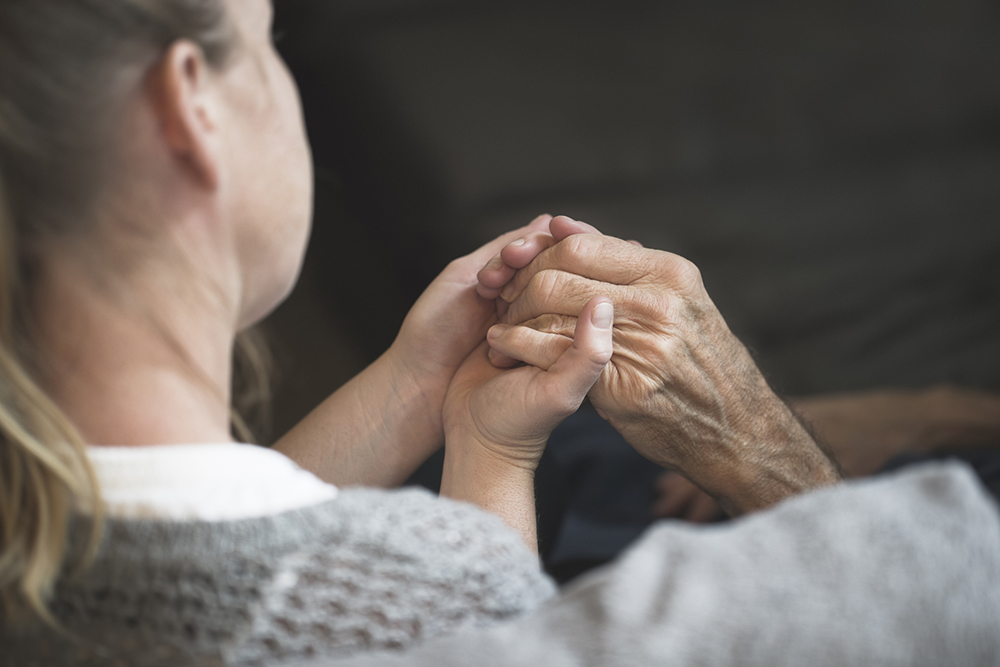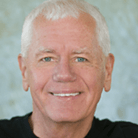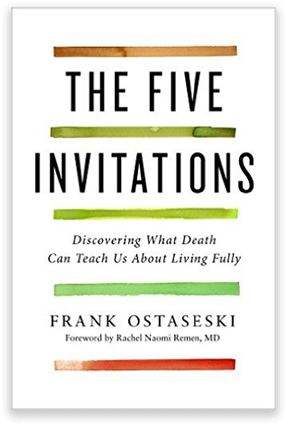When we are caring for someone who is sick, we lend them our body. We use the strength of our arms to move them from the bed to the commode, and we can also lend them the strength of our mind. We can help to create a calm and accepting environment. We can be a reminder of stability and concentration. We can expand our heart in such a way that it can inspire the individual who is dying to do likewise.
We use mindfulness practice as a way to help people explore their pain and shift their relationship to pain in the weeks and months prior to someone’s death. Sometimes the mindfulness goes like a laser to the very heart of a sensation. But not always. Here’s an example. There was a fellow in our hospice named Carl. He reminded me of my father. I had great affection for him. He was exploring mindfulness practice. And one day he had tremendous pain in his belly and I was using with a guided meditation to help explore the sensation around the area of pain. It was simply too much for him, the pain was just too severe. He couldn’t sustain his attention there. So I put my hands on his belly, and I said, Carl, how would it be if I held my hands here for a little bit, how would that be? He said, OK, but it hurts. So I put my hands a little bit away from his belly and said, How’s that? He said, that a little bit better. And I pulled my hand further from his belly and he said, Oh, that’s lovely. I said, could you just rest there for a little bit. Then, from his mouth, not mine, he said, Just rest in love, rest in love. From then on, whenever Carl felt that much in pain, he’d push his morphine pump, to give him an extra dose of morphine, and he’d say, Rest in love, rest in love. What happened in this meditation for him was that he couldn’t penetrate into the direct sensation, but what he could find was a little more space around it. So his relationship to his pain was shifting. When his wife came in the next day and she was very anxious about his dying, he just turned to her and he said, Just rest in love. It became his kind of mantra. So that’s a way we might use mindfulness practice—to explore the pain, or develop a change in the relationship we have to pain.
And that’s part of out challenge in America: to take these practices and give them a contemporary life.
When people are really sick, in the last 24 hours, slow down, move less. Get quiet. Watch your own breath. Help to create an environment in the room which is characterized by fearless receptivity, willingness to meet whatever arises. Do simple things with great attention. Look to the environment in the room. Is it peaceful and restful? Or is it chaotic? Is there a sense of order that will allow this person to fall apart when they’re dying (because that’s part of the dying process, this kind of great chaos that people meet)? So look to that. Attend to the simple things—water or ice chips; whatever it takes to keep the person comfortable. But minimal intervention. Watch the state of your own mind.
Copyright Frank Ostaseski
—Frank Ostaseski is the founder of the Metta Institute and cofounder of the Zen Hospice Project and author of Five Invitations: Discovering What Death Can Teach Us About Living Fully. www.fiveinvitations.com




Leave a Comment